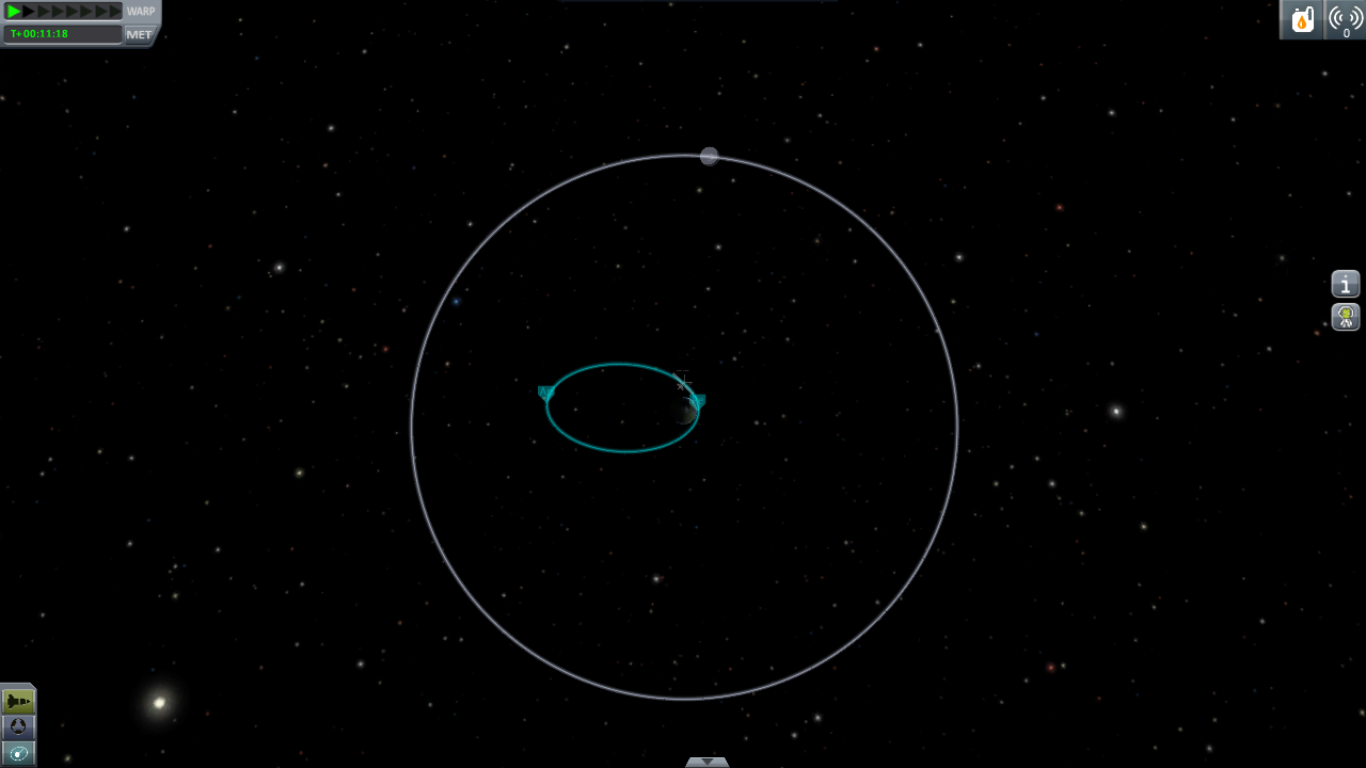On the subject of orbital mechanics, I must say that there are a lot of formulas. At first I was using the second link mostly, but as I reached the halfway point I began to get a headache from all the numbers; or the lack thereof, really. I went over to the NASA/CIT one and found it much easier to understand, as it gave examples in addition to explaining each topic; I wouldn't have understood foci very well if it wasn't for the NASA/CIT site explaining it to me. I'm still looking through both websites, but I made it about 50% of the way through the second link so far today and read two or three pages of Chapter Three in the NASA/CIT website.
I have learned some important vocabulary, some important formulas (none of which are memorized, mind you), and the basics of what I would need to do to get from the Earth to, say Mars. That knowledge can be applied here to discover the trajectory which will help me get to the Mun with a minimal amount of fuel. I still need to read up some more from both sites, and likely others, before I feel like I can really say I understand the subject well enough to explain the most basic of the basics to someone else; I'm still learning the basics myself, after all. I can definitely say as it stands, however, that I do know the most basic of the basics right now. I know what things like foci are, I know how to calculate some things like the eccentricity of the ellipse, and I know some of the orbits that I will be basing my trajectory off of to reach the Mun.
There are some things that I should touch on that I brought up in the last blog post, and some other clarifying comments I myself was unaware of.
Let's start off with my 'safe elliptical orbit'.
 |
| Look how safe it is now! |
Luckily, however, I found a different screen recorder to show it all.
 |
| It's no cat gif, but it'll do |
Here is the (admittedly sub-par) view of Test Rocket One crashing into Kerbin. It's three minutes long, but I wouldn't blame you if you couldn't watch it all:
If you cannot view it in this Blogger format, I also a Youtube mirror here.
Although the screen recording isn't the most important aspect of this all, and I should be and have been focusing on the research aspect of this project, I do want to give you a nice recording of at the very least the manned Mun landing. If you know of any good and free screen recorders for PC, I'd be happy to hear about them.
Another thing that I should mention about last post is this: the Kerbol system (the one in Kerbal Space Program) and the Sol system (ours in real life) are remarkably different.
 |
| In the center of the screen Kerbin (Earth equivalent). Smaller circle Mun (Moon equiavalent). Larger circle Minmus (additional moon, no real world equivalent) |
 |
| In the center, Kerbol, the sun of this system. Various orbits surround it. This is the Kerbol system in its entirety (as of the most recent update). |
 |
| Our solar system in its entirety, including the Oort cloud for comparison. Found here. |
That is, for the most part, it. I cannot think of anything else I should need to mention in this blog post besides who I commented on, and to give you this image of my headquarters at night. I thought that it was interesting.
 |
| My headquarters at night. |
I commented on the following people's blogs. If the links don't link correctly, they are the most recent posts:
Trevor Bert's
Jacob Cohen's
Paul Scott's





